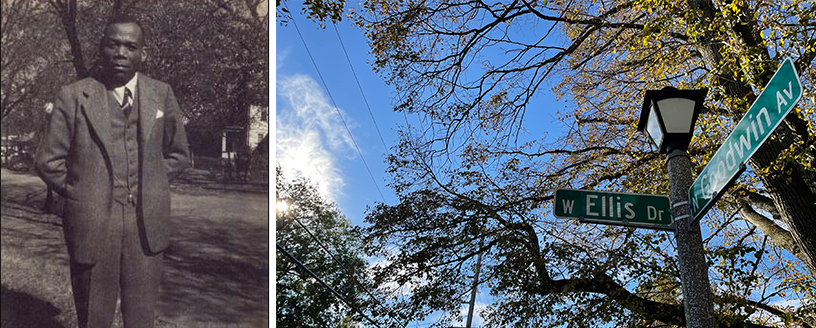Dr. Ellis Subdivision
Northeast Urbana between Goodwin Avenue and Wright Street
The Dr. Ellis Subdivision is the third single-family subdivision created for African Americans in Champaign-Urbana after Carver Park in 1951 and Crispus Attucks Place in 1953. The subdivision was developed by John Goodell of Goodell Engineering and built in three phases, from 1961-1966. It was originally just outside city limits on undeveloped farmland. Today, the subdivision is located in Urbana, IL, in what is considered the historically African American North End neighborhood.
Its borders are between Wright Street to the west and Goodwin Avenue to the east, Eads Street to the south and Bradley Avenue to the north. This subdivision became a destination for young African American families who had the economic capability to purchase a home but were restricted from buying in other parts of the surrounding areas of both Champaign and Urbana due to segregation.
The subdivision was named for Dr. Harry D. Ellis, the second African American doctor to practice in the twin cities. Born in Springfield on December 31, 1894, he served in World War I with the all-African American 370th Infantry, 93rd Division. This division was the only regiment commanded by African American officers and fought with the French army.
After the war, Ellis attended the University of Illinois Medical College. His practice was located at 112 N. Walnut St. in Champaign. He serviced the healthcare needs of African American residents at a time when they were not always guaranteed service from area hospitals. Ellis was also extremely active in the community. In the 1910s, he played banjo in the Raymond Scott Band. Later, he served as a founding member and treasurer of the William F. Earnest American Legion Post #559, treasurer of the Advisory Committee that helped open the Douglass Community Center, and president of the Frederick Douglass Civic League. When Dr. Ellis died in 1946, he lay in state at the Douglass Community Center, the place he helped build. He was buried in the World War I veterans’ section of Mount Hope Cemetery in Champaign, Illinois.
References:
Hursey, Sr., Paul S. “A Verbatim Transcription of an Oral Interview.” by Shirley Walker. Champaign County Historical Archives (October 25, 1982). 1-14. https://archivescatalog.urbanafreelibrary.org/polaris/custom/repository/000400000016.pdf
Williams, P. L., Jr. (2000). A study of the desegregation plan of Urbana School District 116 Elementary schools: From the beginning of implementation to the present. (Doctoral dissertation). (UMI Number 9971219)
Harry D. Ellis: https://localwiki.org/cu/Harry_D._Ellis
Decade:
1950-1959
People:
- Dr. Henry D. Ellis
Location(s):
- Urbana, Illinois
Additional Urbana Trail Sites

